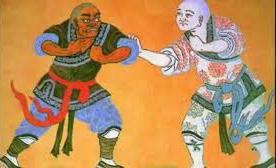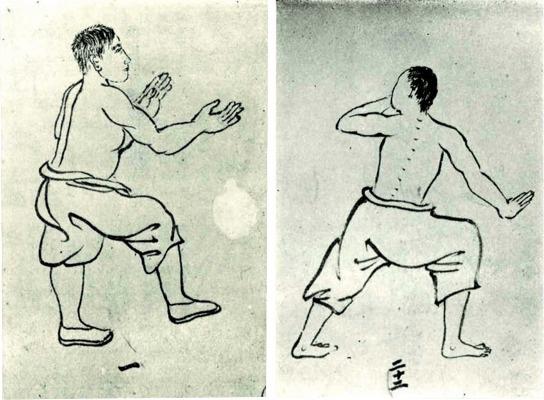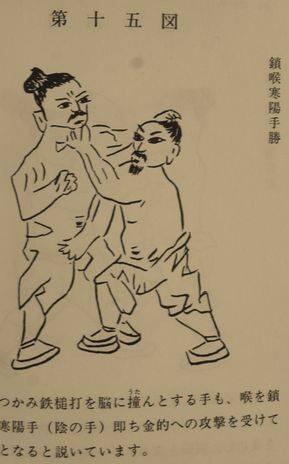
4 minute read
DOJO STORIES SENSEI Gerardo Balves
DOJO STORIES The holy book of Karate: Bubishi (Myth – Legend or Fact) If the Christian religion has a Bible, Karate also has its own: the Bubishi, a legendary book that has accompanied this martial art throughout its rich history. One of the greatest transmissions of knowledge in the history of martial arts took place in the kingdom of the Ryukyu— now Okinawa, Japan—when nomadic warriors from China crossed the sea from Fujian province, taking with them the seeds of a book called Bubishi: The Authentic Karate Bible. The Bubishi is a collection of essays that deal with the philosophical ideas linked to martial arts, as well as metaphysical, medical and methodological essays, as well as a bit of history. Although it is considered a complete work, it is very similar to other 'Bibles' in that there is no author: most of the texts were compiled from other sources over time. The Bubishi is considered a sacred treasure by those who hold it dearest, the Okinawan karate masters, who in turn influenced generations of fighters in Japan, Korea and even the West. The Bubishi is originally Chinese. It is spelled '武备志', which basically means 'martial manual'. In researcher Patrick McCarthy's work The Karate Bible: The Bubishi, the manual was translated and presented with notes and an introduction exploring the various transmission options that could have brought the text to Okinawa. Here we should take a step back and point out the incredible breadth of knowledge that China offered back then. The Bubishi is a compilation of 32 highly varied essays that delve into a wide variety of concepts: it was probably compiled and transmitted by Chinese exiles to Fujian, one of the southernmost provinces of a growing empire that stretched as far north as Russia, to Malaysia in the south and as far as Afghanistan in the west. To put this in context, another martial tome—also called a Bubishi—was put together at around the same time by a Chinese general named Mao Yuanyi. His manual cites more than 2,000 books, contains more than 240 chapters across nine volumes, and touches on every conceivable aspect of warfare: from generic questions—how to fight with and without weapons, how to organize armies, and how to manage skirmishes—to much more more specific. Of particular note are the descriptions of Kung-fu techniques taken from an even older document, written by a master named Qi Jiguan, whom no one outside scholarly circles had heard of.
DOJO STORIES Sensei
Advertisement
Gerardo Balves

The Okinawan Bubishi that forms the foundation for modern Karate is basically a drop of blood in the sea, a unique collection in an ocean of Chinese martial arts scriptures that managed to cross the borders of the empire…and ended up sparking a revolution in the world. Far East and throughout the world. The White Crane becomes Karate China and Okinawa have a long history of relations dating back to at least the 14th century, just before the establishment of the RyuKyu kingdom. Imperial emissaries from China used to visit the islands; there were merchants and fishermen traveling back and forth; Okinawan nobles used to send their sons to the mainland to receive a proper education. The knowledge of the martial arts could be transmitted at any time during the end of the Middle Ages and the beginning of the Modern Age. However, the most remarkable period was probably the one that followed the fall of the Ming dynasty in 1644, when the Shaolin temple was attacked and its warriors scattered throughout the new Qing empire. According to the abundant legends told in dojos around the world, one of these exiles was a Kung-fu master named Fang Zhonggong who fled to Fujian, on the south coast of China. This province, located just across from Taiwan and Okinawa, was for centuries a springboard of flight for adventurers and a place of refuge for China's defeated rebels. Shaolin temple warriors, like Fang, gathered there and created a community that would eventually give rise to the Southern Shaolin temple— Wing Chun—and the White Crane fighting style of Kung-fu. According to legend, Fang Zhonggong was killed by bandits; his daughter, Fang Qiniang, followed her father's martial banner and swore revenge. While conspiring, she saw two cranes fighting on the river bank: enraptured by their movements, she had an epiphany and mixed her father's Shaolin Kung-fu — itself, a mixture of Five Ancestors: Monkey Fist, Tiger Fist and whoever knows what else—with the techniques he learned from the cranes. Thus the Kung-fu of the White Crane would have been born. (As a note, this story is remarkably similar to the legend of the creation of the Wing Chun style. It is noteworthy that the Fang family lived precisely in Yongchun village; in fact, Wing Chun is the ancient phonetic pronunciation for Yongchun (永 春) which means 'Eternal Spring'). The White Crane style of Kungfu is divided into a dozen components: the Whooping Crane, the Leaping Crane, and several more. His techniques spread throughout Fujian and crossed the sea to reach Okinawa. McCarthy's book compiles ten different theories about how White Crane Kung-fu—and the Bubishi manual associated with the style—traveled through the straits and ended up in the hands of Okinawan masters. The natives of the area later mixed the Chinese styles (and their interpretation of the Bubishi manual) with their own native martial arts… and from there a kind of proto-Karate was born. Some theories are somewhat prosaic, such as the one that a young scholar from Okinawa traveled to China, obtained a book from a teacher, and brought it back to Japan without further ado. Others are positive, such as the one that claims that an itinerant Kung-fu master named Ryu Ru Ko—which in Chinese characters could mean











